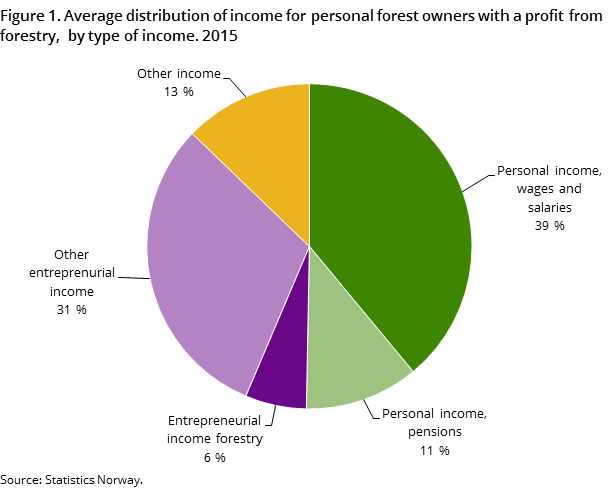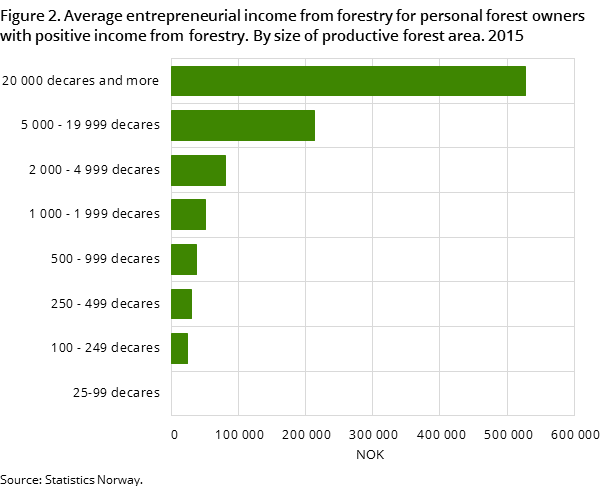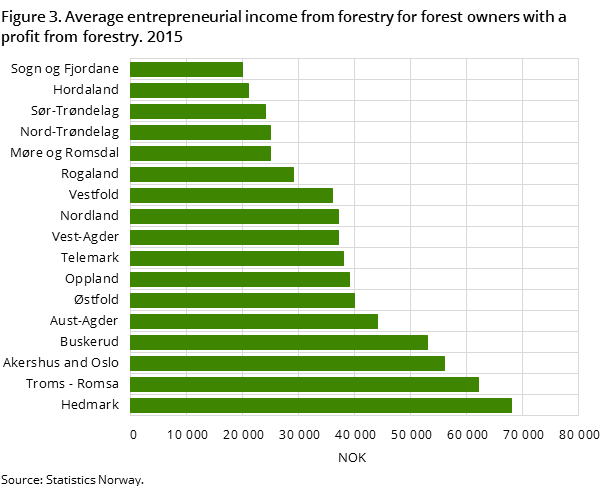Content
Published:
This is an archived release.
Stable forestry income
A total of 21 050 personal forest owners achieved a profit from forestry in 2015. Average earnings from forestry for these owners were NOK 41 000, exactly the same as in 2014.
| 2015 | 2014 - 2015 | ||
|---|---|---|---|
| Number of owners | NOK | Change in entrepreneurial income, per cent | |
| 1The statistics are based on data from tax statistics for personal taxpayers. | |||
| Total | 21 055 | 41 000 | 0.0 |
| Productive forest area | |||
| 25-99 decares | 2 113 | 22 000 | 29.4 |
| 100-249 decares | 4 434 | 24 000 | -4.0 |
| 250-499 decares | 4 738 | 30 000 | 7.1 |
| 500-999 decares | 4 591 | 37 000 | 5.7 |
| 1 000-1 999 decares | 3 035 | 51 000 | 6.3 |
| 2 000-4 999 decares | 1 634 | 80 000 | -7.0 |
| 5 000-19 999 decares | 463 | 213 000 | -0.5 |
| 20 000 decares or more | 47 | 527 000 | -2.6 |



In 2015, accumulated entrepreneurial income from forestry for personal forest owners was NOK 872 million. In addition, spouses and common-law spouses of forest owners had NOK 107 million in income from forestry in the same year. In 2014, the corresponding income was NOK 866 million and NOK 102 million respectively.
Average gross income increased
The average gross income of forest owners with entrepreneurial income from forestry was NOK 672 000; an increase of NOK 50 000 compared with 2014. Income from forestry accounted for 6 per cent of the gross income, while other entrepreneurial income accounted for 31 per cent. Income from wages and salaries accounted for 39 per cent, and the remainder was made up of pensions and other income.
Additional information
Tax is imposed on the average entrepreneurial income from forestry in the preceding five years.
Contact
-
Terje Olav Rundtom
E-mail: terje.olav.rundtom@ssb.no
tel.: (+47) 91 38 60 61
-
Trond Amund Steinset
E-mail: trond.amund.steinset@ssb.no
tel.: (+47) 40 81 13 73
